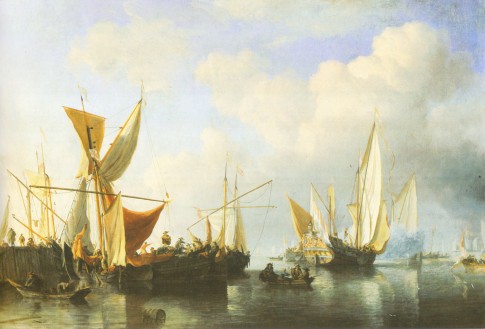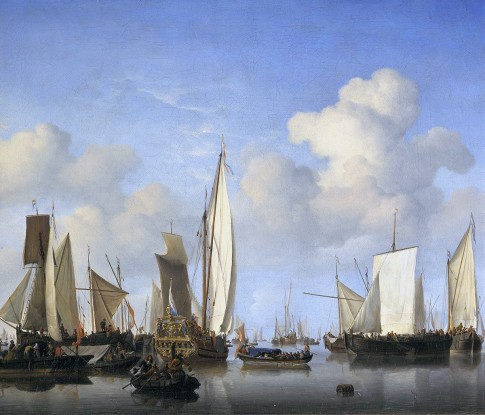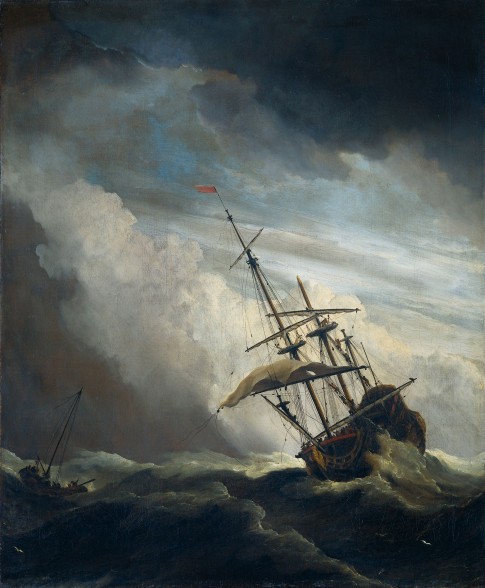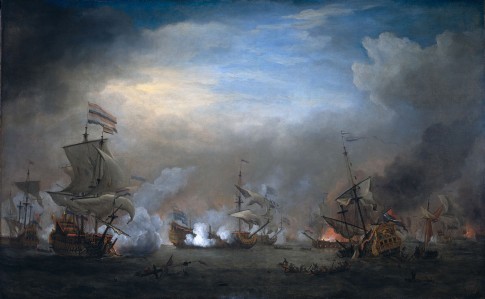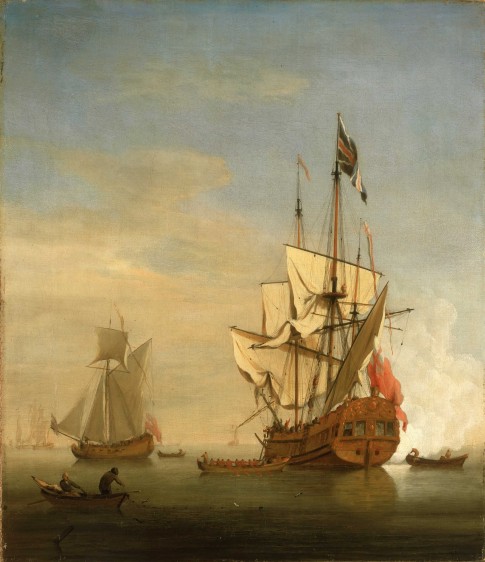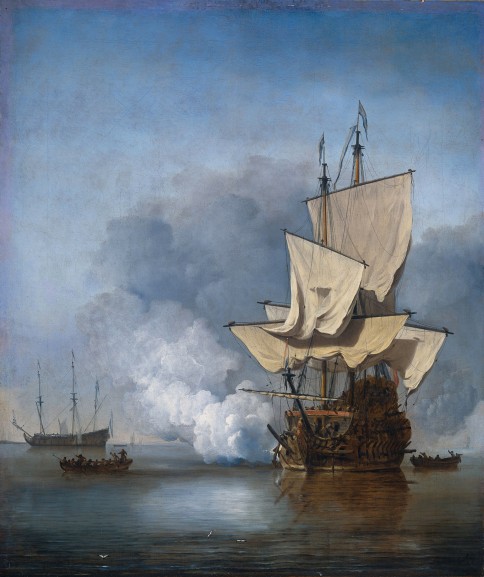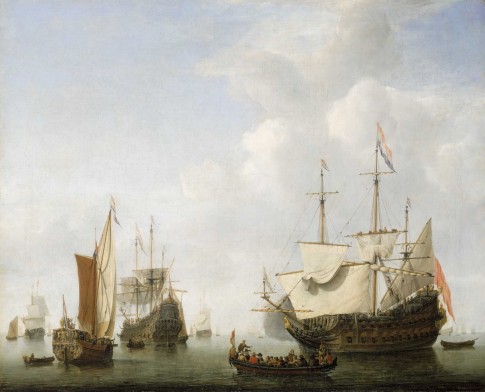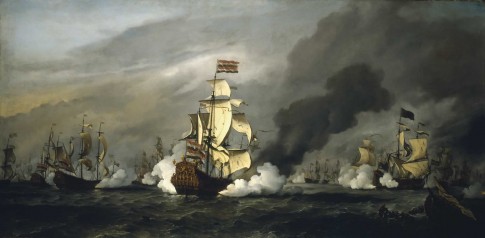Boats in a harbour and a yacht sailing away, also known as Harbour mole of Texel by Willem van de Velde the Younger, 1673
Museum Boijmans van Beuningen, Rotterdam
(image 3000×2040 px, 1.57 MB)
This painting by Willem van de Velde the Younger shows several boats at a harbor mole and a wijdschip with a headsail and a topsail in the foreground. On board of the latter there is group of people lively interacting with each other. Behind this boat there is another wijdschip with sails trimmed. The boats, masts, yards, sails and rigging form a complex composition in the left part of the painting. A careful observer can find a humorous detail: a freshly washed shirt left to dry on a rope in the rigging.
In the center and in the left corner there are two chaloupes. In the right side a richly decorated state yacht is sailing away towards the ships in the right background. It has just fired a salute and the grey smoke is obscuring the view of the boats behind it. The stern of the yacht bears the arms of Holland, indicating its owner – the Province of Holland.
This painting is mostly known under the name “Harbour Mole of Texel”. But this typical harbour scene can also be attributed to almost any other Dutch port.
The painter paid much attention to the light, shadows and reflections in the water, which was not an easy task given the complexity of composition. The choice of colors adds volume and perspective. The skies were painted using an expensive pigment Lapislazuli.
The author signed the painting in the left corner on the wooden beams of the mole. The signature contains the year 1673 as well as the place “in londe”. There is little doubt that this work was commissioned by Willem van de Velde soon after he moved to London from the Netherlands.
This painting is now in the collection of the museum Boijmans van Beuningen in Rotterdam. Its origins are unknown. The museum has purchased it in 1866 at an auction in Paris. The information from the auction’s catalog allows assuming that it came from the 18th century collection of Gerret Braamcamp. By a contradicting account a similar painting from the Braamcamp’s collection was discovered in 1859 in Brussels and was sold at an auction in London in 1925, which leaves the identity of the painting in Rotterdam unclear.
